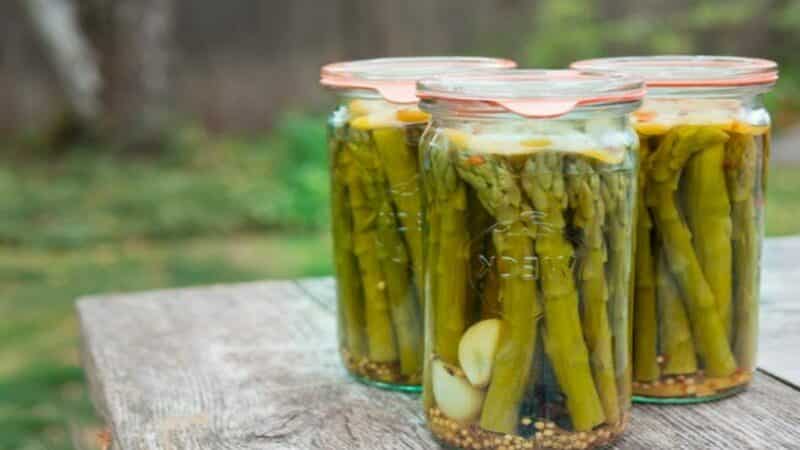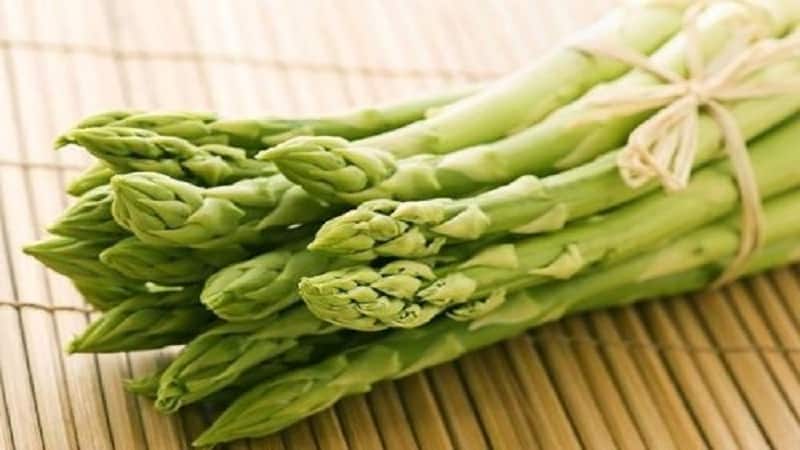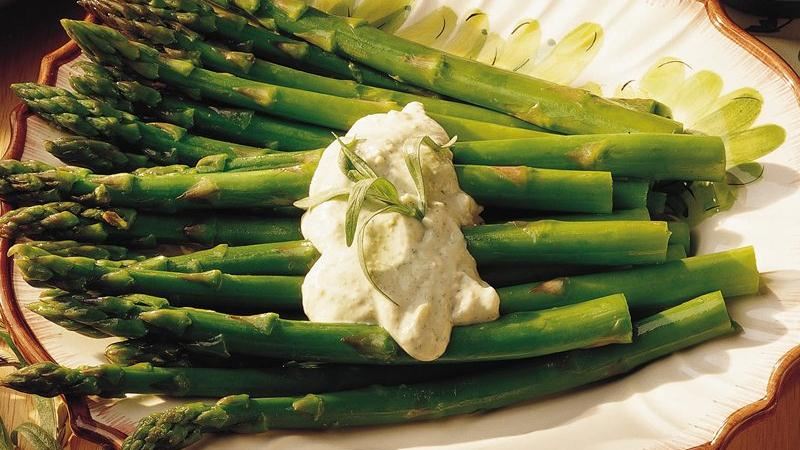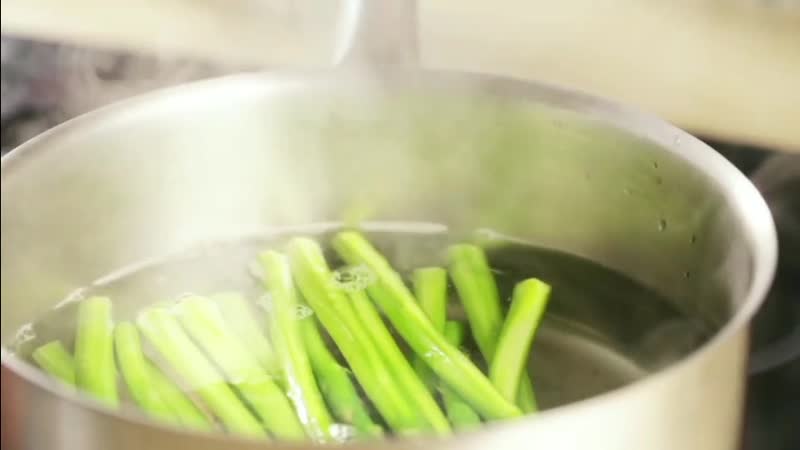How to quickly and tasty cook canned asparagus: the best recipes
Canning asparagus is a quick way to stock up on tasty and healthy preparations. We will tell you in detail what part of the asparagus is canned, how to prepare it correctly, how to close and store the product. We also offer cooking recipes with photos and tips from experienced housewives that will help you prepare delicious winter salads. Even those who don’t eat asparagus raw will like them.
What is canned in asparagus, what parts?
The stems are suitable for canning. But you need to take a close look at them; any of them will not work.
First, pay attention to the color. It should be creamy, milky or close to white. Yellow, green, burnt colors are not suitable.
Secondly, texture is important. The stems should be elastic and dense; discard any loose ones immediately.
Before canning, prepare:
- Place several stems together to form a bunch about 3 cm in diameter. Do not make bunches that are too large. The heads should point in the same direction.
- Carefully trim the roots. Don't overdo it by cutting off the excess.
- Secure the stems in a bunch with thread. Don't bandage too tightly.
- Put water on the fire.
- Place the bunches in boiling water and blanch for 8-10 minutes.
- At the same time, prepare another container, but with cold water.
- After 10 minutes, transfer the stems to cold water. Leave for five minutes.
- Dry the asparagus and start canning.

Quick and tasty recipes
Introducing seven recipes asparagus, canned in pure form and with vegetables.
With salt without additives
Ingredients:
- 1.8-2 kg of asparagus;
- 2 liters of water;
- 250 g coarse salt.
Cooking method:
- Prepare asparagus as described above.
- While the stems are drying, sterilize the jars.
- Dissolve salt in water. If time permits, it is better to pass the solution through gauze several times.
- Place water and salt on the fire.
- Cut the asparagus into large pieces. Don't be shallow.
- Place asparagus in prepared jars.
- Cook the boiling marinade for three minutes.
- Pour boiling water into the jar of asparagus.
- Cover with a lid and sterilize for 20 minutes.
- Screw on the lids and turn the jars upside down.
- You can try after 20 days.
Advice. You don’t have to cut the stems into pieces, but this way they turn out tastier and richer.
With garlic
Ingredients:
- 1.5 kg asparagus;
- 4 cloves of garlic;
- 2 bay leaves;
- 4 tsp. salt;
- 1 tbsp. l. vinegar essence.
How to preserve:
- Blanch the asparagus for 10 minutes.
- Dry on cotton or paper towels.
- Sterilize the jars.
- Place bay leaf and garlic cloves on the bottom.
- If the stems are too long, cut them into large strips.
- Place the asparagus in a jar.
- Boil the water.
- Add salt to boiling water. Stir. Boil for two minutes.
- Pour in the vinegar essence, stir, remove from heat.
- Fill the jars with boiling water.
- Sterilize for 10 minutes. Don't forget to cover with lids.
- Seal the jars.
- Try no earlier than after 2 weeks.

With vinegar
What you will need:
- 1.5 kg asparagus;
- 100 ml vinegar 9%;
- 1 tbsp. l. salt;
- 0.5 tsp. Sahara;
- 200 g chopped walnuts (optional).
Cooking method:
- Prepare the asparagus, wash it, carefully select healthy stems.
- Blanch for six minutes.
- Place the stems in cold water. You can add ice.
- Sterilize the jars.
- If using nuts, chop them.
- Cut dry asparagus into pieces.
- Place nuts at the bottom of the jar.
- If there are no nuts in the dish, immediately fill the jars with asparagus.
- Boil the water.
- Dissolve salt in boiling water. Pour the sugar directly into the jar.
- Cook the filling for four minutes.
- Pour in vinegar, remove from heat.
- Gradually fill the jars with boiling water.
- Screw the caps on immediately using a seaming wrench.
- Store upside down at room temperature for the first 24 hours.
Helpful information. Asparagus stalks combined with walnuts have a positive effect on the digestive system and also help improve concentration and memory. This dish is useful to include in the diet of schoolchildren and students during exam periods.
In tomato
Ingredients:
- 1.3 kg asparagus;
- 1 kg of tomatoes;
- 1 medium carrot;
- 4 small onions;
- 1 bunch of dill;
- 1 bunch of parsley;
- 1 tbsp. l. salt;
- 1 tbsp. l. vegetable oil (preferably sunflower);
- 3.5 tbsp. l. vinegar 9%;
- 1 tsp. ground pepper (black or red).
How to preserve:
- Blanch the asparagus for 8-10 minutes, no more.
- Place the asparagus in ice water for five minutes. Dry.
- Cut the stems into small pieces.
- Grate the carrots on a coarse grater.
- Finely chop the onion.
- Fry onions and carrots in vegetable oil until light golden brown.
- Chop the carrots and cook in boiling water for seven minutes. Next, either rub the carrots through a sieve or pass through a juicer.
- Chop the dill and parsley.
- Combine all ingredients except vinegar in a saucepan.
- Cook for five minutes.
- Pour in vinegar and mix well.
- Divide the mixture into sterilized jars.
- Sterilize the finished product for 20 minutes.
- Seal the lids. Turn over for two days.
Note! The dish turns out juicy and rich. But if you like a more savory snack, at the very end of cooking, pour in 1 tbsp. l. scented oils.
In Korean
Required:
- 500 g asparagus;
- 2 large carrots;
- 4 cloves of garlic;
- 100 ml apple cider vinegar;
- 1 tbsp. l. salt;
- 1 tbsp. l. Sahara;
- 150 ml fragrant vegetable oil;
- Bay leaf;
- peppercorns;
- allspice;
- 1 tsp. ground red and black pepper.
Cooking method:
- Prepare the asparagus, blanch and chop.
- Grate the carrots on a coarse grater.
- Chop the garlic.
- Sterilize the jars.
- Place bay leaf and peppercorns on the bottom.
- Next, fill the jar with asparagus.
- Mix carrots, garlic and oil. Put it on fire. Stir constantly.
- After 1-2 minutes, add salt, sugar, ground pepper of both types, and allspice. If the mixture is too thick, add a little more oil or boiled water.
- Mix well.
- After five minutes, pour in the vinegar and stir again.
- Remove from heat and fill jars with the resulting mixture.
- Sterilize for 15 minutes.
- Close.
- Place in the refrigerator after 10 hours. To eat possible in two days.
With ginger

Ingredients:
- 0.5 kg of asparagus;
- 1 tbsp. l. vinegar 9%;
- 1 tbsp. l. salt;
- 1 tbsp. l. Sahara;
- 3 cloves of garlic;
- 50 g fresh ginger;
- allspice to taste.
How to preserve:
- Blanch the asparagus for five minutes, then dry and coarsely chop the stems.
- Chop the garlic.
- Cut the ginger into large slices.
- Sterilize the jars.
- Place garlic and ginger on the bottom.
- Next, fill the container with asparagus spears.
- Boil the water.
- Salt, pepper and sweeten the boiling water.
- Cook for three minutes.
- Pour in vinegar.
- Pour the filling into the jars.
- Sterilize, covered, for 10 minutes.
- Close.
- Try again after 1-2 weeks.
Important! Ginger gives off a strong flavor, so don't add dill, parsley or basil.
With lemon
The set of ingredients is extremely simple:
- 1 kg of asparagus;
- 1 lemon;
- 2 cloves of garlic;
- 1 tbsp. l. Sahara;
- 0.5 tsp. salt;
- 1 tsp. citric acid.
Cooking method:
- Blanch the asparagus for 10 minutes.
- Sterilize the jars.
- Cut half a lemon into slices, remove the seeds.
- Squeeze the juice from the remaining half lemon.
- Place garlic and some lemon slices at the bottom of the jars.
- Fill the jars with asparagus; cutting the stems is optional.
- Top with remaining lemon slices.
- Boil the water.
- Pour salt, sugar into boiling water, pour in lemon juice. Stir.
- After 1-2 minutes, add citric acid and mix well.
- Remove from heat and fill jars with the resulting marinade.
- Sterilize containers for eight minutes.
- Screw on the lids and store in a dark but not cold place for 1-2 days.
How to store
Storage rules are identical for other pickled vegetables. The first 24-48 hours require the jars to cool at room temperature. To do this, they are wrapped in warm material, having first turned them upside down. After a day or two, the jars are moved to a cool and dark place. This product should be stored for no more than nine months.
Using Canned Asparagus in Recipes
There are fans of canned asparagus in its pure form. But it has another use - delicious salads with the addition of this ingredient.

Salad "Sea"
Ingredients:
- mixture of shrimp, squid, mussels;
- 0.5 kg of canned asparagus;
- 2 cloves of garlic;
- 1 lemon;
- lettuce leaves;
- 1 tsp. ground hot pepper;
- 50 ml vegetable oil;
- salt to taste.
Cooking method:
- Thaw the seafood mixture. Don't forget to drain off any excess liquid and rinse the ingredients.
- Fry seafood in olive oil for 10 minutes.
- Simmer the canned asparagus for five minutes.
- Chop the garlic.
- Add garlic and asparagus to the seafood pan. Add some salt. Fry for 15 minutes.
- Cut half a lemon into wedges.
- Squeeze the juice out of the remaining half. Mix it with olive oil, pepper and a large pinch of salt. This will be a gas station.
- Place lettuce leaves on the bottom of the salad bowl, then lemon slices.
- Next comes a mixture of seafood, asparagus and garlic.
- Pour the dressing on top. Stir before serving.
Chicken salad
Ingredients:
- 250 g canned asparagus;
- 1 chicken or chicken fillet;
- 100 g canned green peas;
- 1 fresh cucumber;
- 1 lemon;
- 1 tomato;
- 2 medium sized onions;
- olive oil for dressing;
- salt to taste;
- 1 tbsp. l. mustard powder.
Cooking method:
- Boil the chicken.
- Cut the onion into half rings.
- Shred the chicken or use your hands to separate it into coarse fibers.
- Mix chicken with asparagus in a dish, add peas.
- Cut the cucumber and tomato into small slices and add to the vegetables and chicken.
- Add onion half rings here.
- Mix mustard, lemon juice and olive oil.
- Season the dish.
Helpful information. This salad is considered dietary and will not harm your figure. You can omit canned peas from the recipe and add fried mushrooms if desired.
Salad "Elena"
And this is a salad for special occasions.
What you will need:
- 250 g asparagus;
- 4 sweet peppers;
- 3 ripe and sweet seedless tangerines;
- 200 g mushrooms;
- 1 tsp. cognac;
- olive oil for dressing;
- 1 tsp. vinegar 3%;
- salt to taste.
Cooking method:
- Cut the bell pepper into strips. It is better to use fruits of different colors, it will turn out brighter and tastier.
- Divide the tangerines into slices, making sure there are no seeds.
- Chop the asparagus stems if canning whole.
- Fry the mushrooms.
- Mix the ingredients and add salt.
- Prepare the dressing by mixing olive oil, vinegar and cognac.
- Serve to a table where there are meat dishes.
Tips and tricks

Advice from experienced housewives is never superfluous. We recommend that you familiarize yourself with some of them:
- Choose asparagus stalks that are dense, elastic, and light in color. Green ones are not suitable for canning.
- Blanching is a mandatory process. Its duration ranges from 5 to 10 minutes.
- Recipes with asparagus do not add a large number of ingredients. Usually these are nuts, tomatoes, carrots.
- Jars must be sterilized.
- Triple or even double filling is not used in such recipes. Sterilization of the finished product is required.
- Sliced stems are more amenable to pouring. But if you wish marinate whole You don't have to cut it.
- Pour vinegar or citric acid into the marinade, not into jars.
- When added to a salad, canned asparagus can be simmered for five minutes. This will reveal the taste better.
- It is good to combine asparagus with lemon in salads. But if you have already preserved the stems with lemon or lemon juice, this will be unnecessary.
- Canned asparagus is also served as an independent dish at the table. In a separate saucepan, combine olive oil and hot pepper. Offer your guests asparagus with sauce.
- An open jar of asparagus can be stored for no more than five days.
Let's sum it up
Canning asparagus is easy and requires minimal time and ingredients.It is almost impossible to spoil such a workpiece. Be careful when choosing stems for preservation: young shoots from white to milky color are ideal.
Be sure to blanch the stems by tying them with string. Combine in jars for the winter with tomatoes, lemon, carrots, garlic, and ginger. Store as you would other canned vegetables. Consume the product in its pure form, and also pamper your family and friends with delicious salads.
Good luck and new discoveries!
How much water?